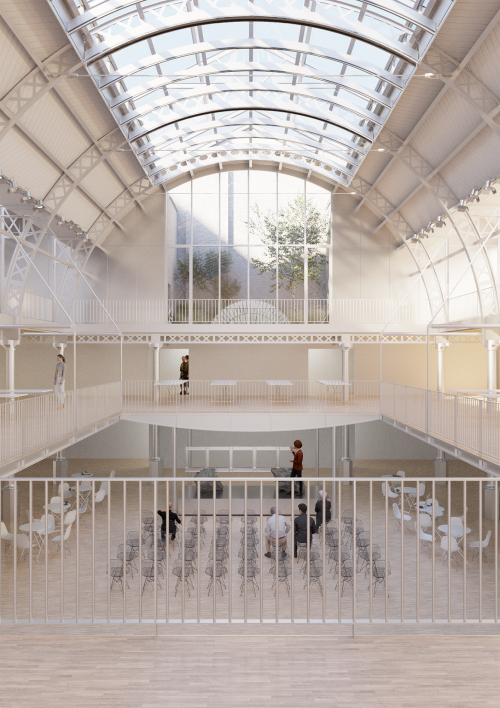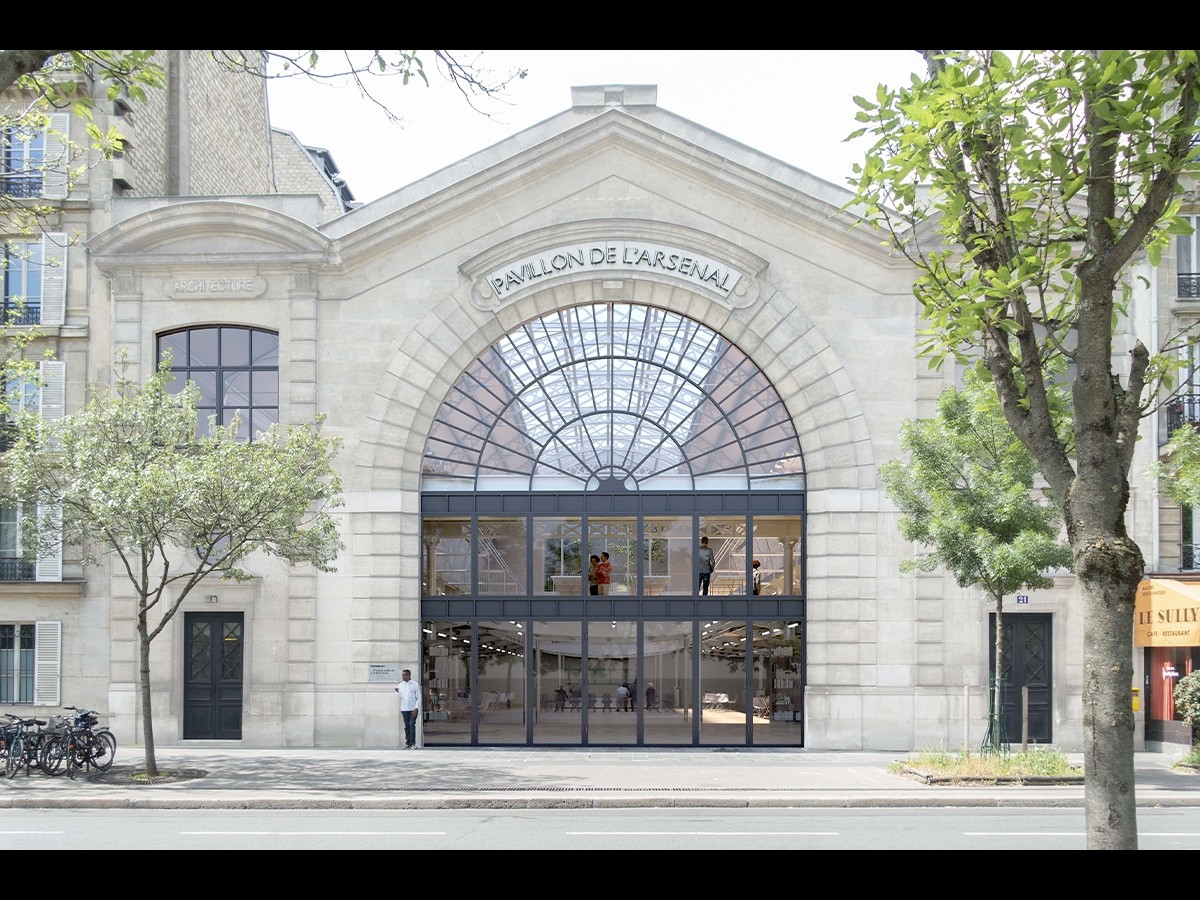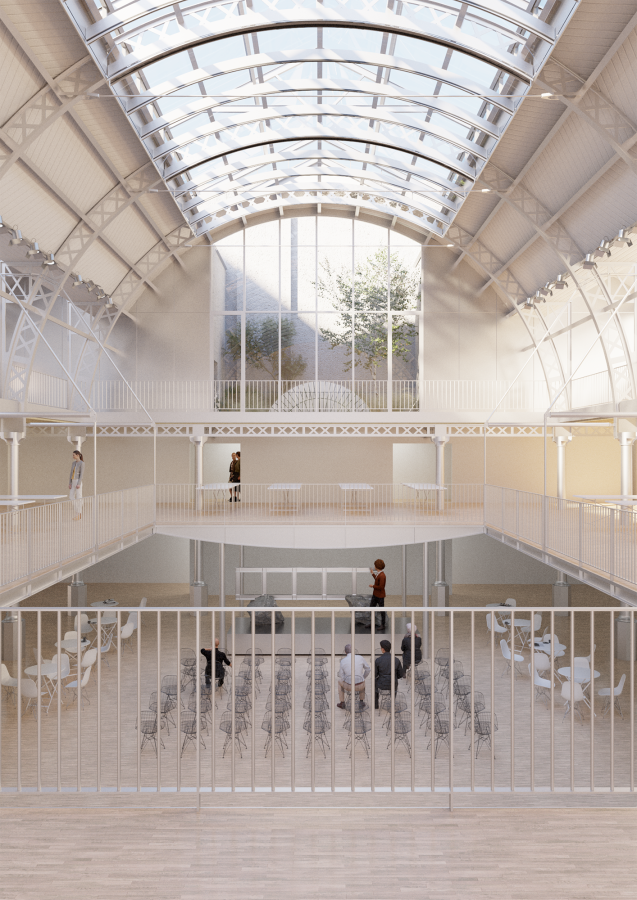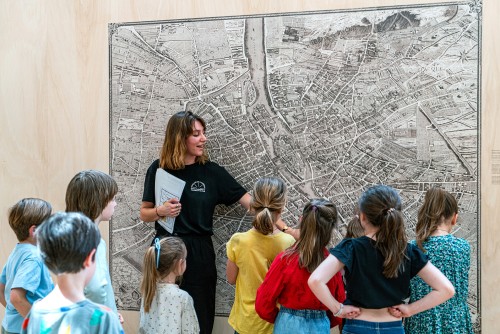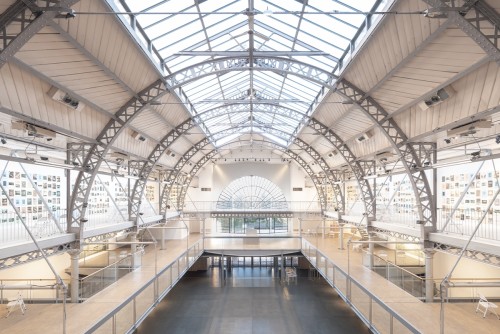RENOVATION
For the first time since its creation in 1989, the Pavillon de l'Arsenal will spend a period outside its walls at 21 boulevard Morland, as part of a major renovation project starting in January 2025. Led by DATA Architectes, the renovation is a comprehensive bioclimatic adaptation project that will improve the reception of visitors, particularly those with disabilities.
The Pavillon de l'Arsenal is planning a two-year tour of various major Parisian venues. Strongly linked to its iconic building, a place that is particularly well identified by Parisians, the Pavillon de l'Arsenal will be able to take advantage of this period to reach out to new audiences, invent new formats and become even more metropolized.
Before joining the “hors les murs” adventure, here are a few key dates to come and enjoy the latest exhibitions “within the walls” of the Pavillon de l'Arsenal:
Extension of temporary exhibitions on R+1 and R+2 until October 20, 2024
Visit the temporary exhibition on the ground floor until October 27, 2024
Visits to the permanent exhibition possible until November 17, 2024
Bookshop open until November 17, 2024
Beginning of off-site events in January 2025.
The schedule of exhibitions and events for 2025 will soon be available on the Pavillon de l'Arsenal website.
LE PAVILLON DE L'ARSENAL
Housed under a large nineteenth century cast-iron hall, in the historic heart of Paris, Pavillon de l’Arsenal is a living space for all urban disciplines. Paying particular attention to the making of the metropolis, and a pioneer of emergent architectures, the center for architecture and urbanism of Paris and the Parisian metropolis is a meeting place for exchange and learning that is free and accessible to all.
Pavillon de l’Arsenal produces exhibitions and documentaries, publishes books and digital content. It’s also a creator of debates, featuring those who re-think and actively design the city. Through a unique and benevolent programming around the dynamic presentation of the shaping of the French capital, the Pavillon celebrates creativity and the diversity of attitudes to allow everyone to better grasp and share the issues around construction that are behind and before them.
In these times of great climate challenges, supporting research and experimentation forms the other key issue addressed by the program. The FAIRE program, launched in 2017, is the first dedicated urban accelerator and incubator. Every year, in addition to our in-situ operations, it provides funding and support to a dozen project teams with innovative practices and experimental approaches in order to enable participants to analyze, prototype and full-scale test1 responses to key challenges related to architecture, landscape, design, and society.
Our nonprofit business model also reflects this drive for innovation, collective construction, and shared benefits. It is supported by mixed funding, including a subsidy from the City of Paris and funding from operators in the real estate, construction and urban development sectors that are active in the region. With the assistance of the municipality, sponsors, one-year corporate partners, and those who provide specific support to particular events, we are inventing a virtuous model, which reflects the new synergies that are actively building Greater Paris.
In order to make these insights resonate beyond the scope of our research, every year Pavillon de l’Arsenal participates in an average of ten presentations that take place beyond our walls. Within, we place the emphasis on the creativity and vibrancy of all protagonists involved, including project owners and metropolitan creators, while outside is where we share best practices and new potential uses.
The leading European center for architecture and urbanism, Pavillon de l’Arsenal invites everyone to embrace and experience the transformation of the city as it is re-invented and re-imagined.
Each year, Pavillon de l’Arsenal puts on or produces:
• 20 exhibitions
• 10 publications
• 70 conferences
• 300 guided tours of the exhibitions
• 150 courses and workshops
and welcomes:
• 50 foreign delegations
• 15,000 children
• 200,000 visitors.
The Pavillon de l'Arsenal is a non-profit association under the French Law of 1901.
For the first time since its creation in 1989, the Pavillon de l'Arsenal will spend a period outside its walls at 21 boulevard Morland, as part of a major renovation project starting in January 2025. Led by DATA Architectes, the renovation is a comprehensive bioclimatic adaptation project that will improve the reception of visitors, particularly those with disabilities.
The Pavillon de l'Arsenal is planning a two-year tour of various major Parisian venues. Strongly linked to its iconic building, a place that is particularly well identified by Parisians, the Pavillon de l'Arsenal will be able to take advantage of this period to reach out to new audiences, invent new formats and become even more metropolized.
Before joining the “hors les murs” adventure, here are a few key dates to come and enjoy the latest exhibitions “within the walls” of the Pavillon de l'Arsenal:
Extension of temporary exhibitions on R+1 and R+2 until October 20, 2024
Visit the temporary exhibition on the ground floor until October 27, 2024
Visits to the permanent exhibition possible until November 17, 2024
Bookshop open until November 17, 2024
Beginning of off-site events in January 2025.
The schedule of exhibitions and events for 2025 will soon be available on the Pavillon de l'Arsenal website.
LE PAVILLON DE L'ARSENAL
Housed under a large nineteenth century cast-iron hall, in the historic heart of Paris, Pavillon de l’Arsenal is a living space for all urban disciplines. Paying particular attention to the making of the metropolis, and a pioneer of emergent architectures, the center for architecture and urbanism of Paris and the Parisian metropolis is a meeting place for exchange and learning that is free and accessible to all.
Pavillon de l’Arsenal produces exhibitions and documentaries, publishes books and digital content. It’s also a creator of debates, featuring those who re-think and actively design the city. Through a unique and benevolent programming around the dynamic presentation of the shaping of the French capital, the Pavillon celebrates creativity and the diversity of attitudes to allow everyone to better grasp and share the issues around construction that are behind and before them.
In these times of great climate challenges, supporting research and experimentation forms the other key issue addressed by the program. The FAIRE program, launched in 2017, is the first dedicated urban accelerator and incubator. Every year, in addition to our in-situ operations, it provides funding and support to a dozen project teams with innovative practices and experimental approaches in order to enable participants to analyze, prototype and full-scale test1 responses to key challenges related to architecture, landscape, design, and society.
Our nonprofit business model also reflects this drive for innovation, collective construction, and shared benefits. It is supported by mixed funding, including a subsidy from the City of Paris and funding from operators in the real estate, construction and urban development sectors that are active in the region. With the assistance of the municipality, sponsors, one-year corporate partners, and those who provide specific support to particular events, we are inventing a virtuous model, which reflects the new synergies that are actively building Greater Paris.
In order to make these insights resonate beyond the scope of our research, every year Pavillon de l’Arsenal participates in an average of ten presentations that take place beyond our walls. Within, we place the emphasis on the creativity and vibrancy of all protagonists involved, including project owners and metropolitan creators, while outside is where we share best practices and new potential uses.
The leading European center for architecture and urbanism, Pavillon de l’Arsenal invites everyone to embrace and experience the transformation of the city as it is re-invented and re-imagined.
Each year, Pavillon de l’Arsenal puts on or produces:
• 20 exhibitions
• 10 publications
• 70 conferences
• 300 guided tours of the exhibitions
• 150 courses and workshops
and welcomes:
• 50 foreign delegations
• 15,000 children
• 200,000 visitors.
The Pavillon de l'Arsenal is a non-profit association under the French Law of 1901.






